The 1985 Trial of the Military Juntas marked a before and after in contemporary Argentine history. Yet that spirit of unity in the face of a greater evil, made eternal by the call for “Nunca más" (“Never again”), seems every day more distant from the current cycle dominated by the grieta social rift.
Luis Moreno Ocampo, the assistant prosecutor in the historic trial, was one of the protagonists of that story which Argentina, 1985 – Santiago Mitre’s new film with Ricardo Darín playing the prosecutor Julio Strassera and Peter Lanzani playing Moreno Ocampo – is now returning to the centre of the political scene.
The film enjoyed a grand reception at the Venice Festival earlier this month with some tipping it as a more than possible candidate for a 2023 Oscar following a hit run at several international festivals this year.
In an exclusive interview, Luis Moreno Ocampo recounts the historic importance of the Trial, speaks of his “reincarnation” in Lanzani’s acting and analyses the political tension following the failed assassination attempt against Vice-President Cristina Fernández de Kirchner.
To what do you owe the re-edition of your book about the trial?
I’m here to talk to the younger generations, to those born after the Trial of the Military Juntas, for whom it is normal to live in democracy. The film creates an opportunity and I wanted to support it by explaining via a book what happened and what I learned in my work as a prosecutor. I already had a book published [Ed.: Cuando el poder perdió el juicio], and together with [the publishers] Capital Intelectual we made an effort and re-edited it. We subtitled it “Argentina, 1985,” in line with Santiago Mitre’s film featuring Ricardo Darín and Peter Lanzani. There is now an opportunity to return to the past so that the youth of this century can travel to 1985 and understand what that trial meant.
What do you want to tell the younger generations?
In 1985, when the military were put on trial, they still had plenty of power. We had just come out of a bloodthirsty dictatorship and nobody knew what could happen. For Argentina it was a very important moment because the trial was like the icing on the cake.
During the 1983 election campaign, Raúl Alfonsín, the candidate of the minority Radical party, proposed investigating the past. The Peronist candidate Ítalo Argentino Luder said that could not be done because a military amnesty was in place. That was not what he wanted but what he understood to be legally possible. Alfonsín said that it could be done and won the election with 52 percent of the vote, immediately proceeding to keep his promise. His first decree was to investigate the guerrilla leadership and his second to order the court-martial of the Armed Forces commanders-in-chief responsible for the dictatorship. Then he organised the CONADEP truth commission, an Argentine innovation, after Congress had almost unanimously decided that the military amnesty was null and void and that an investigation was necessary. Within a few months a law was decreed to permit the military to be investigated under the Code of Military Justice. Afterwards CONADEP issued a report which blew everybody’s mind.
People today would not understand that but in 1983 and 1984, many of us in Argentina did not know what had happened. The report broke that wall of silence and on the basis of that we began to investigate. In 1985 there was a public trial where in the course of five months some 800 witnesses of every type testified, from two ex-presidents – Luder and Arturo Frondizi [Ed.: the 1958-62 president ousted by a military coup who died in April, 1995] – to everyday people. People from all over the country, telling the whole story to the judges, and that changed everything.
You said that your own mother did not believe what had happened. How did the trial manage to create mass awareness?
I got a call from Julio Strassera, the prosecutor of the Federal Appeals Court, which was in charge of the Trial. I was happy to help him but I had not worked on a court trial in my life. I was not a prosecutor in that sense but I worked as a prosecutor for the Supreme Court preparing rulings. I understood how prosecutors worked in the United States system more than the Argentine.
He explained to me that we could not do it the traditional way. So I dedicated myself to assembling an investigative team and when we started work, I told my mother what was going on and she did not believe me. She loved [1976-81 military president Jorge] Videla, she attended Mass with Videla in Olivos and since my grandfather was a general, Videla was like her dad for her. She told me that the military had saved us from the guerrillas.
So I told Julio that apart from convincing the judges, I had to convince my mum and if not, it was not going to work out. I never could convince her but when Adriana Calvo de Laborde, the first witness to take the stand as a victim, began testifying on how she gave birth to her baby daughter handcuffed in the back of a police car, my mother called me and said: “I still love Videla but you’re right, he has to go to jail.” What happened to my mum in 1985, I want to happen to kids of 15 now.

Were there also technological changes permitting the trial to reach a mass audience?
Besides showing the horror, we also innovated institutional technology. In Argentina the trials were written, not oral. The judge did the investigating, not the prosecutor, and did so very bureaucratically. Nor could you pick the cases. All that was changed. Legally we were trying the case according to a special military system which gave us plenty of flexibility. The judges decided on an oral and public trial and that was fundamental for my mum finding everything out via that trial.
We decided that we were going to pick some cases – not 30,000 but some 700. We also did the investigating because Strassera understood that we could not go to the police and ask them to investigate. We assembled a young team averaging 20-21 years in age and called up the victims asking them to tell us what had happened, also seeking out documentation to prove that what they were telling us was the truth. The people who had survived the concentration camps told us about the tortures and we managed to prove the deaths in other ways.
We put together the investigation in five months with 2,000 witnesses. That was a technological innovation which the defence lawyers of the accused did not understand. Most of them were ex-judges, very elderly guys accustomed to the previous model. They never imagined that we would be coming at them with this tsunami of evidence.
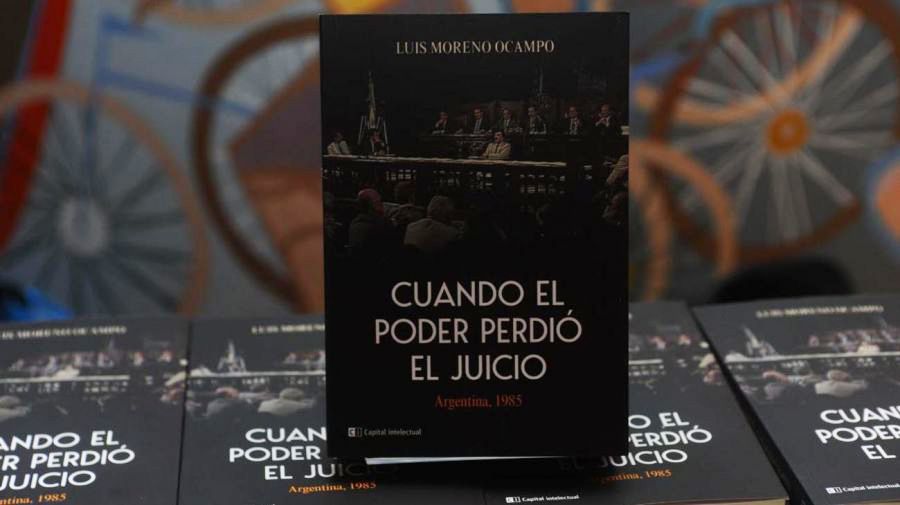
The trial was filmed but was not then an event for mass diffusion.
The trial was a very public event for five straight months but above all, because people read about it in the newspapers. Editorial Perfil published the Diario del Juicio which contained very complete and detailed information on everything which was going on with articles and testimony which had great impact but it was not televised. Apart from Santiago Mitre’s film, which is rated as fiction, the work of Ulises de la Orden, who is finishing a documentary using real tapes from the trial, has connected it in a very interesting way, presenting a two-hour version of what happened there.
The new film has a great cast and was given a great reception at the Venice Film Festival.
I haven’t seen it yet, I wish I could talk about the film without having seen it!
It seems fundamental to me that the film comes out. I’m not interested in all the details because it’s Santiago Mitre’s work, not mine. That’s his story, telling about something from my life but he tells it. Apart from that, what I did does not matter now, what matters is what Peter Lanzani does in the film. I’m reincarnated in him (laughs). This permits the role of Julio Strassera [Ed.: played by Ricardo Darín, who is also a co-producer of the film] to be discussed again at this time – how a prosecutor was suddenly transformed into a person representing the entire country when he pleaded for “Nunca más.” In 1985 we were not respected by everybody [in Argentina], there were many people furious with us for investigating that.
The film has to consolidate that this was a key moment when we Argentines learned the meaning of law and justice. There are no more coups in Argentina and there is democracy. There are no more enemies and that is what must be discussed and understood.
How do you contrast the social consensus which the Trial of the Juntas inspires today with the extreme polarisation of Argentine politics, taken to a peak by the attempt on Vice-President Cristina Fernández de Kirchner’s life?
In the 1970s Argentine politics was directed against enemies, not adversaries. Not only enemies from another political party but within Peronism where there were the Montoneros, the Triple A of [José] López Rega and trade union groupings, also violent. Armed struggle formed part of Argentine politics. That’s why many people supported the [1976] coup: they were sick of political violence. What followed was state terrorism, which was on an infinitely superior and different scale of brutality, which we did not understand.
The Trial of the Juntas permitted us to show that the violence of the guerrillas or the Triple A cannot be accepted and far less state terrorism. That was the brutal break the Juntas Trial brought about. That must be consolidated today. In democracy there are no enemies, there are citizens who may be accused of crimes with the ‘Vialidad’ highway corruption trial being perhaps one such accusation. That is being investigated but the defendants are innocent until proven guilty. The prosecutor does his job and accuses, the defence lawyers do theirs and defend and the judges will resolve their verdict according to the evidence. That is normal in Argentina and it is truly very interesting to have a trial today where the current vice-president is accused. There are people who criticise the system but it works.
What is unacceptable is an attempt on the vice-president’s life. There all Argentines must stand together. Politics cannot again become a battlefield where people can kill each other. If there is one lesson to come out of the Juntas Trial, it is that death cannot be a political weapon.
It’s difficult to imagine a circumstance permitting the unity of people in that context.
To me it seems much more a problem of public debate than people and also a problem of the algorithms manipulating public information, which trigger division here, in the United States and all over the world. That is a new phenomenon which we must confront and perhaps the direction we are taking in the film and book will permit us to find a different formula. The algorithms permit the extremists to lead the discussion and the Juntas Trial was precisely the triumph of the moderates, of the law and the judges representing the moderates who wanted nobody killed but the law to be applied.
Cristina Fernández de Kirchner has installed the concept of ‘lawfare’ as a plan of political persecution against certain types of leaders, with a political timing on the part of the courts. How do you interpret lawfare and the political use of justice?
Lawfare is not a concept invented by Cristina but by the American general Charles Dunlap, who complained that the enemies of the United States were trying to control their armed forces via trials, hence the concept of lawfare as a new form of war. And it was indeed maximised with the issue of torture in Guantánamo. The US troops tried to heed the law but then George Bush decided to use his armed forces to confront the insurgency [in Iraq], similar to what happened in Argentina, including the torture of prisoners as a strategy. Investigating torture is not lawfare, those are crimes which must be investigated.
Judges and prosecutors can, of course, be used to investigate a political enemy and that can be called lawfare but when there is a serious investigation with evidence, that is justice in action. What must be done is to have the political leaders respecting the legal limits. The vice-president herself has denounced bigger cases of corruption than Lázaro Báez so it is very important that those too be investigated.
The issue of corruption does not only concern judges and prosecutors but also political leaders. They cannot be involved in issues of corruption and then always denounce the judges. Corruption must be prevented. If everybody steals in a company, that’s not a problem of the auditor, that’s a problem of the general manager and the same thing applies to a country.







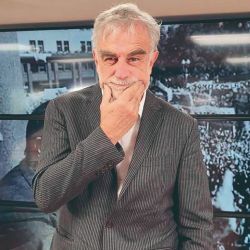
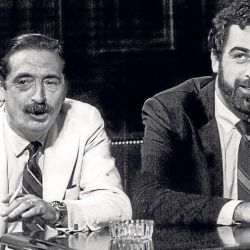









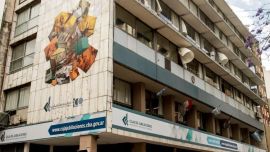



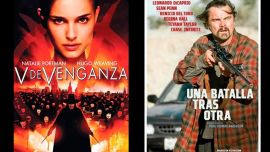
Comments